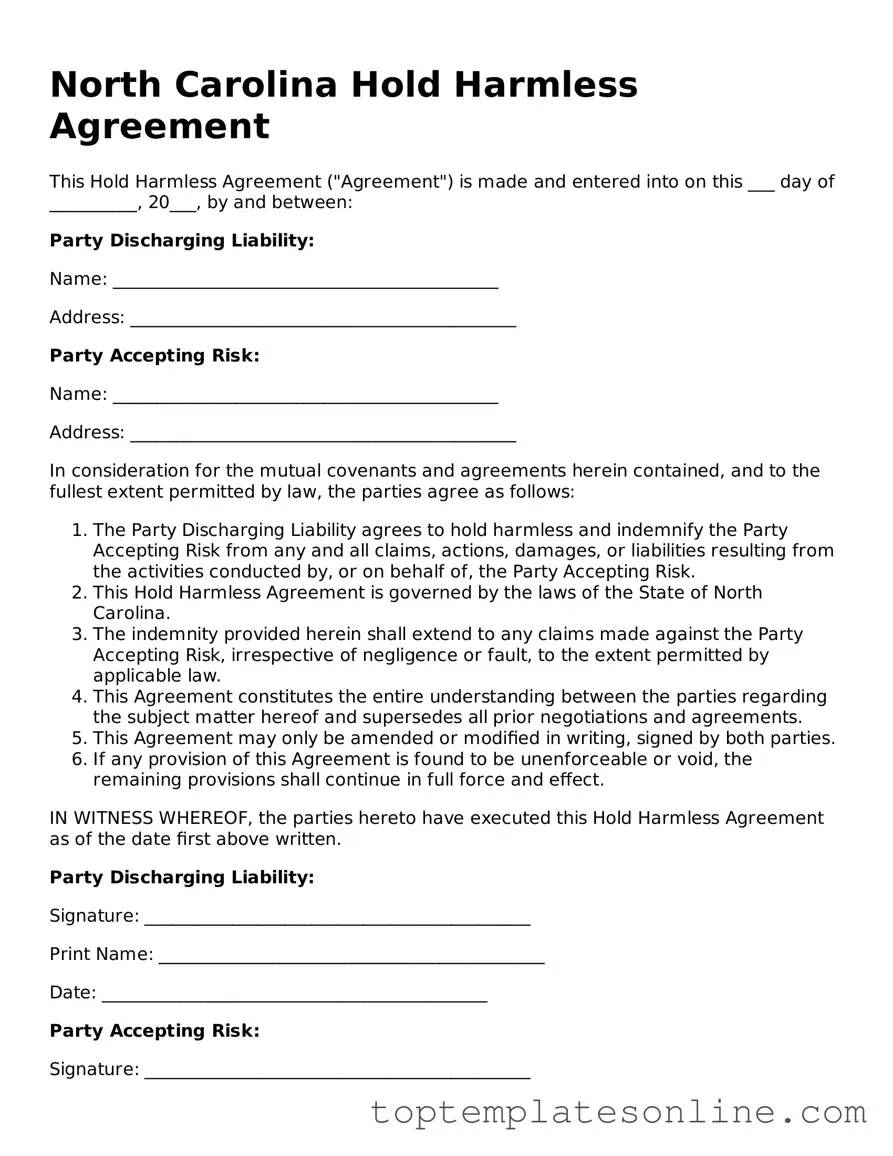The North Carolina Hold Harmless Agreement form serves as a crucial legal document that protects parties from liability in various situations, particularly in contractual relationships. This agreement is often used in contexts such as property rentals, construction projects, and event planning, where one party seeks to limit their exposure to claims or damages arising from the actions of another. By signing this form, individuals or businesses agree to assume responsibility for any injuries or damages that may occur, thereby shielding the other party from legal repercussions. Essential elements of the agreement include clear identification of the parties involved, a detailed description of the activities covered, and explicit language outlining the scope of liability being waived. Additionally, the form typically includes provisions for indemnification, ensuring that the responsible party will cover any legal costs that may arise from claims related to the specified activities. Understanding the nuances of this agreement is vital for anyone looking to navigate potential risks while engaging in various transactions or activities in North Carolina.
